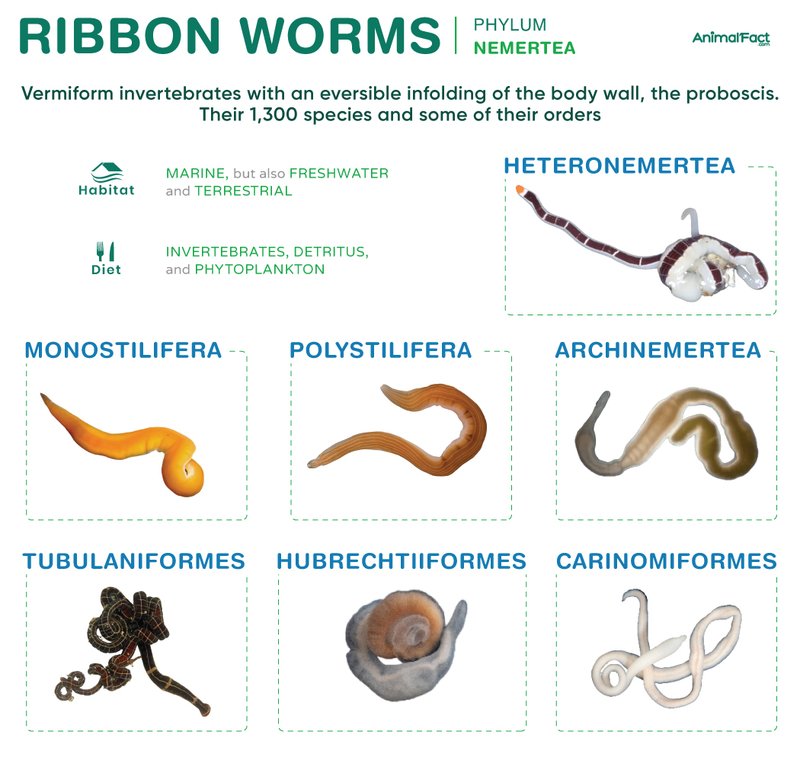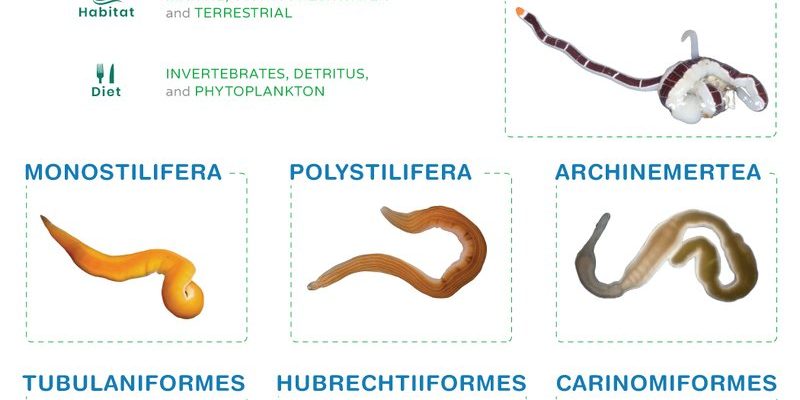
The Pacific Northwest is home to several species of ribbon worms, each with its quirks and characteristics. These creatures are not just intriguing for their looks; they play an essential role in their ecosystems. In this article, let’s dive into the world of ribbon worms found in the Pacific Northwest. We’ll explore their habitats, unique features, and even how they fit into the bigger picture of marine life in this beautiful region. So grab a cup of coffee, sit back, and let’s unravel the mysteries of these fascinating creatures together.
What Are Ribbon Worms?
Ribbon worms belong to a group known as Nemerteans, which are soft-bodied, elongated creatures that can vary significantly in size—from just a few centimeters to over 30 meters long. Yes, you read that right! These guys can be impressively long, though most species in the Pacific Northwest tend to be on the shorter side. You might find them hiding under rocks or buried in the sand, using their long, flat bodies to blend in seamlessly with their surroundings.
One of the most interesting features of ribbon worms is their proboscis—a long, retractable feeding organ. The way they use it is pretty fascinating too. When they spot potential prey, such as small crustaceans or worms, they launch their proboscis to capture it quickly. It’s like a super-fast fishing line! This unique feeding mechanism helps them thrive in their environment, making them efficient hunters in the ocean.
Another fun fact about ribbon worms is how they can regenerate their bodies. If they lose a part, they can regrow it over time. Just imagine if you could regrow a finger or toe! This ability not only helps them survive but also grants them a level of resilience that many other creatures lack.
Common Species of Ribbon Worms in the Pacific Northwest
The Pacific Northwest is home to several ribbon worm species, each with its unique characteristics. One of the more commonly seen species is the *Cerebratulus*, which has a vibrant green to brown coloration. You might spot it coiled up in seaweed or under rocks during low tide. They’re often quite long, and spotting one in the wild can be an impressive sight!
Another species worth mentioning is *Lineus*. This particular ribbon worm can be quite colorful, often sporting bright yellow or orange hues. These are more delicate and can easily be overlooked if you’re not paying attention. They tend to prefer deeper waters, making them a little trickier to find, but those who do often describe them as a hidden gem of the ocean.
Lastly, there’s the *Protoporomus*, which has a slightly different body structure, boasting a more flattened appearance. This species is usually found in sandy or mud-rich environments. Its unique body shape helps it burrow into the substrate—a sneaky way to hide from predators and ambush its prey.
Habitat and Distribution
Ribbon worms thrive in various habitats along the Pacific Northwest coast, from tidal pools and rocky shorelines to deeper waters. You’ll often find them in intertidal zones, where they can soak up the moisture and enjoy the wave action without being washed away. They seem to prefer sandy or muddy substrates, which provide a cozy environment for burrowing and hunting.
These versatile creatures have adapted to both marine and brackish waters. The fluctuating salinity levels of estuaries offer ribbon worms a unique opportunity to thrive in a wide range of environments. In fact, some species are better suited for these dynamic areas than others, showcasing the incredible diversity of life in the Pacific Northwest.
It’s also intriguing how ribbon worms can be found from Alaska down to California, adapting as they go. Their wide distribution speaks volumes about their resilience and ability to cope with different environmental conditions. If you ever explore the coast, keep an eye out for these elusive beauties!
Ecological Importance of Ribbon Worms
You might be wondering, “Why should I care about ribbon worms?” Well, these creatures play a vital role in their ecosystems. As predators, they help control populations of other marine organisms, like small crustaceans and other worms. By keeping these populations in check, ribbon worms help maintain a balance in their habitats. Think of them as a tiny part of the ocean’s food web, supporting larger species and contributing to the overall health of the marine environment.
Moreover, ribbon worms also serve as prey for various animals, including fish and birds. Their unique body structures and behaviors make them an attractive snack, feeding into the diets of larger predators. In a way, they’re part of the bigger picture, making their ecological importance undeniable.
As they decompose, ribbon worms also contribute to nutrient cycling in the ocean. When they die, their bodies provide essential nutrients to the surrounding water and sediment, benefiting other marine life. So, their impact goes beyond just their presence; it’s a ripple effect that can be felt throughout their environment.
Studying Ribbon Worms: Research and Conservation
Research on ribbon worms has increased in recent years, as scientists seek to understand more about their ecology and behaviors. These studies not only help us learn about the ribbon worms themselves but also about the health of marine environments. By monitoring populations, researchers can gain insights into the overall health of the ecosystem.
Unfortunately, like many marine organisms, ribbon worms face threats from pollution, habitat loss, and climate change. Conservation efforts are critical to ensuring these creatures and their habitats remain intact. Protecting coastal areas and promoting clean water initiatives can help preserve the ecosystems ribbon worms thrive in.
Efforts to raise awareness about these unique creatures are also essential. By fostering an appreciation for ribbon worms, we can help encourage conservation and protection of their habitats. Through education and outreach programs, we can inspire future generations to care about marine life, including these often-overlooked wonders of the ocean.
How to Spot Ribbon Worms in the Wild
If you’re eager to encounter ribbon worms on your next beach trip, there are a few tips that can help you spot them. First, look for tidal pools—these shallow waters often reveal hidden treasures. Gently moving rocks or stirring up the sand can sometimes expose these worms. Just be sure to handle any creatures with care and return them to their habitat undisturbed.
Another great way to find ribbon worms is to keep an eye on the seaweed. Many species love to hide among the fronds, making them hard to see. A careful glance can reveal their vibrant colors contrasting with the greens and browns of the seaweed. If you have a keen eye, you might even spot them peeking out from their sandy shelters.
Lastly, consider going out at low tide. This is when you have the best chance to see what’s lurking beneath the surface. With a little patience and a sense of adventure, you might discover some ribbon worms in their natural habitat!
Ribbon worms may not be the most glamorous creatures in the ocean, but they’re definitely among the most intriguing. With their unique characteristics and crucial roles in the marine ecosystem, these fascinating organisms deserve more attention. Whether you’re exploring tidal pools along the Pacific Northwest coast or simply learning to appreciate the underwater world, understanding ribbon worms adds another layer to your ocean knowledge.
So next time you find yourself by the beach, remember to look a little closer. You might just spot one of these colorful, squiggly wonders hiding in the sand or among seaweed. Embracing the beauty and complexity of marine life enriches our connection to the world around us. Happy exploring!

